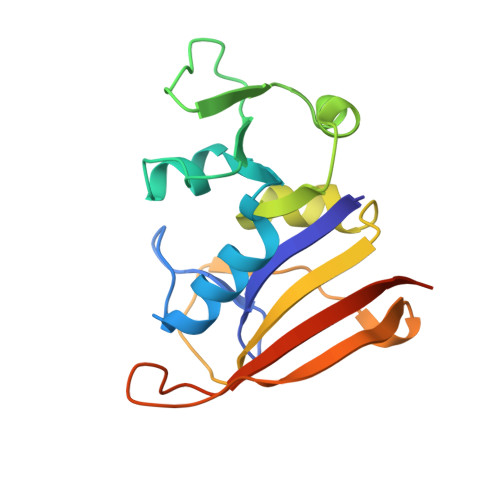Toward New Therapeutics for Skin and Soft Tissue Infections: Propargyl-Linked Antifolates Are Potent Inhibitors of MRSA and Streptococcus pyogenes.
Viswanathan, K., Frey, K.M., Scocchera, E.W., Martin, B.D., Swain Iii, P.W., Alverson, J.B., Priestley, N.D., Anderson, A.C., Wright, D.L.(2012) PLoS One 7: e29434-e29434
- PubMed: 22347365
- DOI: https://doi.org/10.1371/journal.pone.0029434
- Primary Citation of Related Structures:
3SGY, 3SH2 - PubMed Abstract:
Hospital- and community-acquired, complicated skin and soft tissue infections, often attributed to Staphylococcus aureus and Streptococcus pyogenes, present a significant health burden that is associated with increased health care costs and mortality. As these two species are difficult to discern on diagnosis and are associated with differential profiles of drug resistance, the development of an efficacious antibacterial agent that targets both organisms is a high priority. Herein we describe a structure-based drug development effort that has produced highly potent inhibitors of dihydrofolate reductase from both species. Optimized propargyl-linked antifolates containing a key pyridyl substituent display antibacterial activity against both methicillin-resistant S. aureus and S. pyogenes at MIC values below 0.1 µg/mL and minimal cytotoxicity against mammalian cells. Further evaluation against a panel of clinical isolates shows good efficacy against a range of important phenotypes such as hospital- and community-acquired strains as well as strains resistant to vancomycin.
Organizational Affiliation:
Department of Pharmaceutical Sciences, University of Connecticut, Storrs, Connecticut, United States of America.
















